Ready to teach your students all of the foods in Spanish? Food units can be so much fun to teach with the right tools, activities, and resources. I’m excited to share all of my Spanish food vocabulary ideas with you in this post!
Pre-Teach Spanish Foods
Personally, I like to pre-teach as many topics in Spanish as possible so that when we get to an actual unit on that theme, students already know a few vocab words that they’ve been using all along. Some examples of pre-teaching would include:
- Talk about what you ate this weekend during your Monday morning chats and ask follow-up questions. Ex. “¿Qué comiste este fin de semana?” “Comí arroz con pollo.” ¿Estaba rico?”
- Throw random food words and expressions into sample sentences while you’re teaching other topics. Ex. If you’re teaching ER verbs, use comer and talk about what you’re eating. Ex. If you’re teaching gustar, talk about what you like and don’t like to eat.
- Post a Spanish fruit and/or vegetable of the week on the door or somewhere random in the room. Use it as an extra credit question on a quiz – remember to remove it before the quiz. These Spanish foods flashcards are super useful for this. Time-Saving Tip: Print, laminate, and have students who finish quizzes early cut them out for you.
Food Activities
- Students keep a food diary of everything they eat for 2-3 days.
- Create meal plans for 2 days for a family of four. They make a list of ingredients and how much they cost. This works well in a digital presentation. You may wish to add a variety of food phrases to their templates. Page 1: Me gusta in one column and Me gustan in another column. They add photos of the foods and write the food names underneath. Page 2: No me gusta/n Page 3: Voy a preparar: Page 4: Necesito comprar: Page 5: Mi comida favorita es:
- Pass out supermarket flyers. Say the name of a food and see who can find it in their flyer first.
- Interactive Notebook Flashcards: Students tape the INB flashcards in their notebooks and then can use them as a reference the rest of the year. Have them practice writing sentences underneath the foods. Print and laminate smaller sets for classroom games. Pro Tip: Have students print at home if they want them in color.
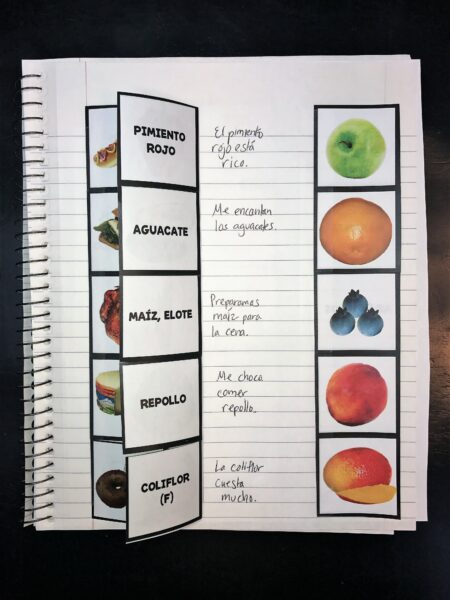
Boom Cards
What is my absolute favorite new way to teach language? Spanish Boom Cards!! I love that students listen to the correct pronunciation from a native speaker. Then, they learn to recognize the words, recognize them by listening, then write the new vocabulary.
Click the links to see more Spanish foods Boom Cards:
Mega Bundle- All the Foods! Fruits Vegetables Foods #1 Foods #2 Drinks
Spanish Foods Games
- Ball Game: Bring in a few medium-sized squishy balls. Pass out 1-2 flashcards to each student. Divide students into 2-3 groups, 8-10 students per group. In each group, one person will be “it” and start with the ball. The other students form a circle around the person with the ball and hold their pictures out in front of them for everyone to see. The game starts when one of the students in the circle says the word on someone else’s card. The chosen person must then say the word on another person’s card before the person who is “it” tags them with the ball. The chosen person cannot immediately go back to the person who chose them; they must choose someone else. After the students are really good with one set of vocabulary, have them switch sets with another group.
- Memory: Print the photo side and the marbled cover of the flashcards on cardstock and laminate (if possible). Make (2 copies) one set for every 2-3 students. Students place all of the photos in a grid face down. They try to find matches and must say each word that they find. If you find a match, you get to go again. The person with the most matches wins.
- Around the World: Students start at their individual desks. The student at the front left of the class starts and stands next to the second student’s desk. Hold up a flashcard and those two students try to say the flashcard first. The student with the correct answer advances to the next desk and the student with the wrong answer sits at the desk where they were. The student who makes it all the way around the classroom first wins.
- Manos Arriba: Divide the students into individuals, pairs, or groups of three. Pass out a set of flashcards and a pair of scissors to each student. Have students cut out the flashcards. You say a word/expression in Spanish and they must find the correct picture. Then say, “Manos arriba” and they hold up the word/expression so you can see it. Award one point for each correct answer. Students keep track of their own scores and compete against their partners. You can also pick a student to say the words/expressions.
- Circumlocution: Divide the class into teams. One student picks a vocab card (covering it with his hand) and describes the vocabulary word in Spanish while the other teammates try to guess. The student gets one minute to get the class to guess as many words as possible. They get one point for each word they guess correctly. Then the other team goes. Variation: Pass out individual card sets to pairs of students. Each pair goes at once and tries to get their partner to guess all the words. The group that finishes first wins.
- Mercado: Set up your class as a store with different students selling various vocabulary items. Use prices and money from a Spanish-speaking country. I use euros in my class – if you want to print euro manipulatives and euro price tags, here’s a link to my euro resource if you don’t have time to make your own. Students speak all in Spanish. Some are customers and some are vendors. This is a great way to practice greetings, numbers, asking how much something costs, and negotiating.
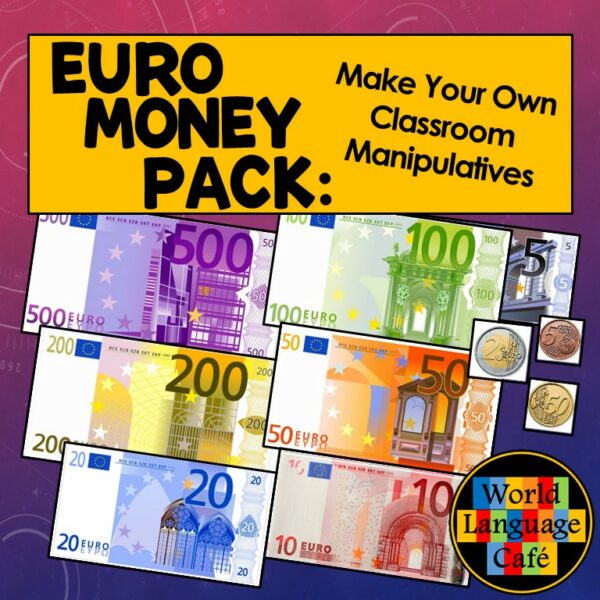
Spanish Foods Videos
Super fun to add some extra culture by showing some food videos from Spanish-speaking countries. Here are 3 of my favorites.
Noche de rábanos in Mexico, 11 min. – A celebration where people carve sculptures out of radishes.
Drinking mate, 2 min. – In English. Talks about the traditions surrounding drinking mate.
Preparando hallacas, 5 min. – In Spanish with English subtitles. Typical Venezuelan food.
Spanish Idiomatic Expressions with Food
Estar como un queso: To be very attractive.
Estar de mala leche: To be in a bad mood.
Tener mala leche: To be a mean person.
Ponerse como una sopa: To get wet because of the rain.
Ser un chorizo: To be a thief.
Ser pan comido: Easy as pie.
Estar como un fideo: To be thin as a rail.
Estar de mala uva: To be in a bad mood.
Me he metido en una buena berenjena: I really got myself into trouble.
Spanish Food Vocabulary:
Spanish Fruits:
fresa – strawberry
bananas, plátanos, guineos – bananas
uvas – grapes
naranja – orange
manzana – apple
nectarina – nectarine
melocotón, durazno – peach
frambuesa – raspberry
sandía – watermelon
pera – pear
melón, cantalupo – cantelope
toronja – grapefruit
cereza – cherry
piña – pineapple
arándanos – blueberries
melón dulce, melón d’espagne – honeydew
clementina – clementine
kiwi – kiwi
zarzamora – blackberry
mango – mango
ciruelas pasas – dates
albaricoques – apricots
limón – lemon
lima – lime
arándanos agrios – cranberries
tomate – tomato
granada – pomegrante
pasas – raisons
papaya, mamón – papaya
higo – fig
calabaza – pumpkin
caramel – starfruit
ciruela – plum
plátanos – plantains
aceitunas – olive
coco – coconut
aguacate – avacado
Spanish Vegetables:
lechuga – lettuce
zanahorias – carrots
maíz, elote – corn
brécol, bróculi – broccoli
cebollas – onions
guisantes, chícharos – peas
judías verdes, ejotes – green beans
pepino – pepper
tomate – tomato
coliflor – cauliflower
espinacas – spinach
hongos – mushrooms
patatas, papas – potato
patatas dulces, batatas – sweet potatos
pimiento verde, rojo, amarillo – green, red, yellow pepper
apio – celery
repollo – cabbage
ésparragos – asparagus
berenjena – eggplant
calabacín, calabaza verde – zucchini
coles de bruselas (F) – brussel sprouts
jalapeños – jalapeños
betabel, remolacha – beetroot
rábanos – radishes
col rizada (F) – kale
ruibarbo – rhubarb
puerro – leek
chirivías – parsnip
alcachofa – artichoke
lombarda – red cabbage
okra – okra
nabo sueco – turnip
calabacín, calabaza amarilla – summer squash
acelgas – swiss chard
nabo – turnip
Spanish Meats:
tocino – bacon
pollo – chicken
jamón – ham
pavo – turkey
bistec, carne de res – steak
perro caliente – hot dog
hamburguesa con queso – hamburger with cheese
pescado – fish
albódigas – meatballs
Spanish Desserts:
pastel, pay, tarta – pie
torta, pastel – cake
dulces, golosinas – candy
bizcocho de chocolate, brownie – brownie
pastelito, quequito, cupcake – cupcake
helado – ice cream
galleta – cookie
chocolate – chocolat
paleta – popsicle
rosquilla, dona, donut – donut
Other Foods:
huevos – eggs
queso – cheese
cereales – cereal
papas fritas, patatas fritas – fries
arroz – rice
puré de papas, patatas – mashed potatoes
ensalada – salad
pan – bread
pasta, fideos, espagueti – pasta
sándwich, bocadillo, emparedado – sandwich
pizza – pizza
sopa – soup
mayonesa – mayonnaise
sal (f) – salt
pimienta – pepper
avena – flour
mantequilla – butter
mostaza – mustard
kétchup, catsup, salsa de tomate – ketchup
jalea – jelly
crema de maní, cacahuele, mantequilla de maní – peanut butter
bagel, rosquilla con queso crema – bagel(with cream cheese)
panecillo, magdalena, bollo – muffin
panqueques – pancakes
galletas saladas – crackers
pipits, papas fritas – chips
ajo – garlic
Spanish Drinks:
agua (el agua, pero fem.) – water
leche (f) – milk
té – tea
jugo de manzana, zumo de manzana – apple juice
jugo de naranja, zumo de naranja – orange juice
limonada – lemonade
café – coffee
refresco – soda
agua con gaz, agua de seltz (F) – seltzer
chocolate caliente – hot chocolate
batido – smoothie
leche de chocolate (F) – chocolate milk
Hope that you found this post helpful! Let me know in the comments if you have other great ways to teach foods and maybe I’ll add them to this post.

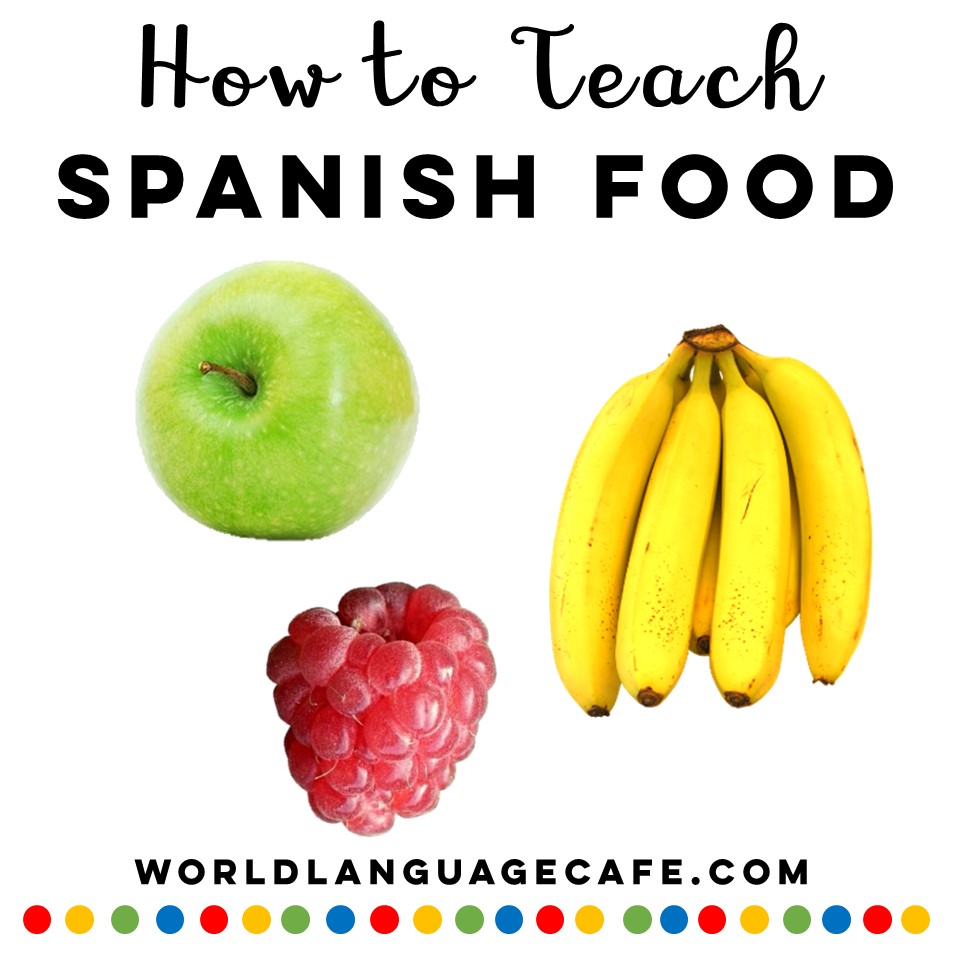
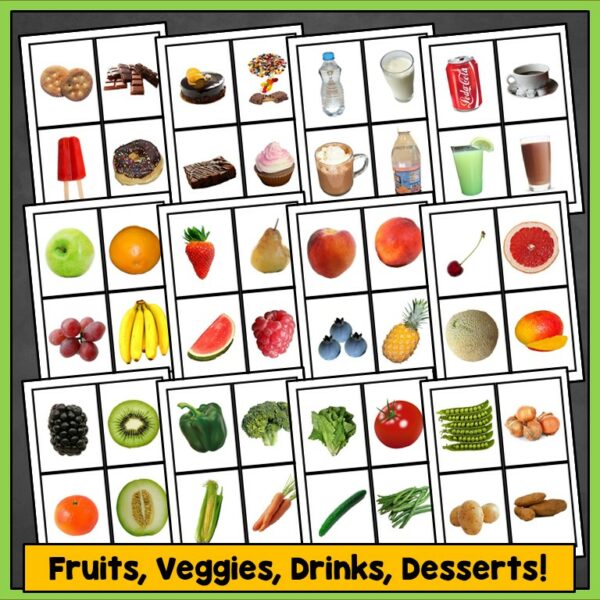

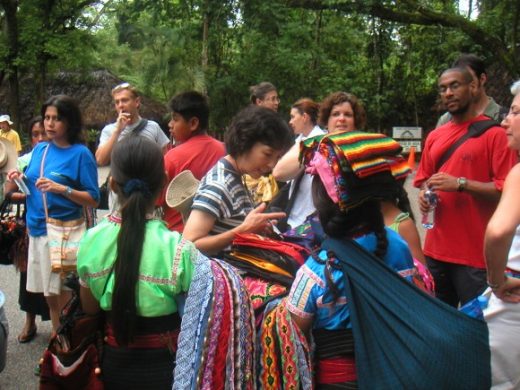

2 Comments
Luke
March 24, 2025 at 11:02 amHello,
Do you have an activity that teaches make and need, for example: What do you need to make.. .? You need…..ingredients.
Sherry Sebesta
March 24, 2025 at 2:10 pmHi Luke,
Unfortunately, I don’t have anything like that. Sounds like a fun activity idea though.
– Sherry